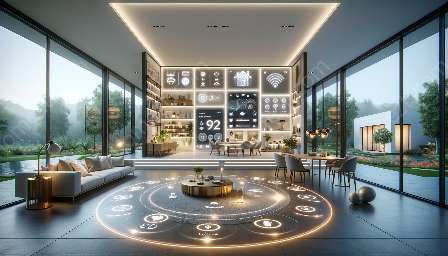Interior design software has undergone significant advancements, revolutionizing the way designers, architects, and homeowners conceptualize and create living spaces. The integration of technological advances in interior design and intelligent home design has further enriched the capabilities of these software tools, empowering users with innovative features and functionalities.
Technological Advances in Interior Design
The evolution of interior design software has been closely intertwined with technological progress. From 2D drafting to complex 3D modeling and virtual reality (VR) environments, designers now have access to an array of tools that enable them to visualize and actualize their creative visions with unprecedented precision and detail.
One of the most notable advancements is the seamless integration of cloud computing and collaborative platforms. Design professionals can now work across geographical boundaries, sharing designs and incorporating real-time feedback, thereby enhancing the collaborative design process.
Intelligent Home Design
Intelligent home design, characterized by smart devices, automation, and integration of AI, has sparked a new wave of opportunities for interior design software. These software solutions are now equipped to support the integration of smart home technologies, enabling designers to simulate and optimize the functionality and aesthetics of smart living spaces.
Key Innovations in Interior Design Software
- Virtual Reality (VR) and Augmented Reality (AR) Capabilities: Advanced software now facilitates immersive VR experiences, allowing stakeholders to virtually walk through spaces and experience design concepts in a realistic environment.
- Parametric Design and Generative Algorithms: Interior design software has embraced parametric and generative design principles, empowering designers to explore complex geometries and create highly customized, efficient designs.
- Integration of Building Information Modeling (BIM): BIM-enabled software solutions have streamlined the design, construction, and management of buildings, promoting seamless collaboration and data interoperability.
- Artificial Intelligence (AI) and Machine Learning: AI-driven tools are enhancing the design process, assisting in space optimization, material selection, and predictive analysis, ultimately enabling more informed design decisions.
The Future Landscape of Interior Design Software
Looking ahead, the convergence of interior design software with technological and intelligent home design advancements is poised to reshape the industry. Anticipated developments in the field include the widespread adoption of real-time rendering, enhanced virtual staging capabilities, and the utilization of IoT data for informed design choices.
As interior design software continues to evolve, it promises to democratize the design process, making it more accessible, collaborative, and responsive to the dynamic needs of the modern world.


